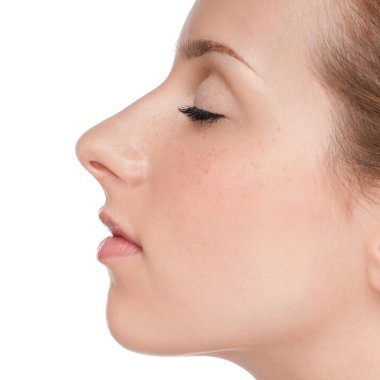
Can You Change Nose Shape With Exercise (6 Important Facts)
Can you change nose shape with exercise? The nose’s structure primarily relies on bone and cartilage, so exercise isn’t likely to alter its shape significantly. In a world where cosmetic surgeries and invasive procedures dominate the realm of facial transformations, there’s a whispered curiosity: Can the contours of your noses be sculpted by the mere power of exercise?
It’s a tantalizing notion, isn’t it? Imagine, trading scalpels for sweat, and clinics for yoga mats. While the idea may seem like a whimsical flight of fancy, nestled within it lies a kernel of truth that beckons exploration. So, let’s embark on a journey beyond the scalpel’s edge, delving into the tantalizing prospect of reshaping one’s nose through the artistry of exercise.
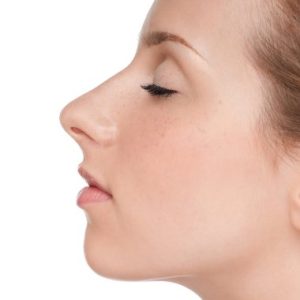
Can You Change Nose Shape With Exercise
No, you cannot change the shape of your nose through exercise. The shape of your nose is primarily determined by your genetics and bone structure. While exercises may help improve the overall appearance of your face by toning muscles and improving circulation, they cannot alter the shape of your nose.
The Myth of Nose Shape Exercise
Despite common misconceptions, exercises targeting the nose won’t substantially alter its shape. While facial exercises can enhance muscle tone and skin appearance, the nose’s structure mainly comprises bone, cartilage, and soft tissue, which aren’t affected by typical exercises.
Understanding Nasal Anatomy
The nose’s shape primarily results from genetics and bone structure. The nasal bones and cartilage determine its contours and proportions, with minimal muscle involvement. Thus, exercise lacks the ability to reshape these fundamental components significantly.
Options for Altering Nose Shape
If dissatisfied with your nose’s appearance, surgical procedures like rhinoplasty offer effective solutions. Rhinoplasty involves modifying the nasal bones and cartilage to achieve desired aesthetic or functional changes. Consulting a qualified plastic surgeon is crucial to explore viable options tailored to individual preferences.
Understanding Nose Anatomy
Structure of the Nose
The nose comprises bone, cartilage, and soft tissue, forming its distinctive shape. It consists of nasal bones, septum, and cartilage, with nostrils serving as openings. The nasal cavity contains mucous membranes and blood vessels, aiding in air filtration and conditioning. Understanding nasal structure is essential for various medical and cosmetic procedures.
Factors Influencing Nose Shape
Genetics
Genetic factors play a significant role in determining nose shape, inherited from parents and ancestors. DNA dictates nasal bone structure, nostril width, and overall appearance. Family traits often influence nasal characteristics passed down through generations.
Aging
The nose undergoes changes with age, primarily due to tissue laxity and bone remodeling. Cartilage may weaken, leading to drooping or elongation of the nasal tip. Skin loses elasticity, contributing to the appearance of nasal bumps or droopiness.
Trauma
Traumatic injuries, such as fractures or blows to the nose, can alter its shape permanently. Nasal trauma may cause deviations in the nasal septum or cartilage displacement, affecting both function and aesthetics. Accidents or sports injuries commonly result in nasal deformities.
Understanding nose anatomy involves recognizing the interplay between structure and external influences like genetics, aging, and trauma. Genetics dictate inherent characteristics, while aging and trauma can alter the nose’s appearance over time. Recognizing these factors aids in medical treatment and cosmetic interventions.
Exercise and Its Impact on Nose Shape
Clarification on the Relationship Between Exercise and Nose Shape
Understanding the Link Between Exercise and Nasal Structure
Understanding the link between exercise and nasal structure unveils intriguing insights into the interplay between physical activity and anatomical adaptations. Research suggests that regular exercise can contribute to improved nasal function and potentially alter nasal structure.
Engaging in aerobic activities such as running, cycling, or swimming can enhance respiratory muscle strength, leading to more efficient breathing patterns. Additionally, increased blood flow associated with exercise may promote tissue oxygenation and support nasal tissue health.
Furthermore, certain exercises, particularly those targeting the upper body and neck muscles, might indirectly influence nasal structure by promoting better posture and alignment, potentially alleviating nasal congestion. While more studies are needed to elucidate the precise mechanisms underlying this relationship, the evidence underscores the importance of physical activity not only for overall health but also for potential benefits to nasal function and structure.
Examination of Facial Muscles
Role of Facial Muscles in Nose Appearance
The role of facial muscles in determining nose appearance is significant yet often overlooked. Facial muscles, particularly those surrounding the nose, play a crucial role in shaping its form and contour. These muscles, including the nasalis, depressor septi, and levator labii superioris alaeque nasi exert subtle but noticeable influences on the nose’s appearance through their dynamic movements.
For instance, the contraction of the nasalis muscle can widen or narrow the nostrils, while the depressor septi muscle can pull down the nasal tip, altering its angle. Additionally, the levator labii superioris alaeque nasi muscle can lift the nasal wing, affecting its overall shape. Furthermore, repetitive facial expressions and habitual movements can gradually influence the development of certain nasal features over time. Understanding the intricate interplay between facial muscles and nose appearance sheds light on the complexities underlying facial aesthetics and the potential impact of facial expressions on nasal aesthetics.
Potential for Exercise to Strengthen Facial Muscles
While often overlooked, there exists a significant potential for exercises to strengthen facial muscles, contributing to overall facial tone and appearance. Just as physical workouts enhance muscle strength and endurance in the body, targeted exercises can similarly benefit the muscles of the face. These exercises may involve various movements such as smiling, puckering, or even facial yoga poses.
By engaging in these exercises regularly, individuals may experience improvements in facial firmness, reduction of fine lines, and enhanced facial symmetry. Moreover, strengthened facial muscles can potentially aid in mitigating age-related sagging and promote a more youthful appearance. While the effectiveness of such exercises may vary among individuals, incorporating them into a holistic wellness routine can offer notable benefits for maintaining facial muscle health and vitality.
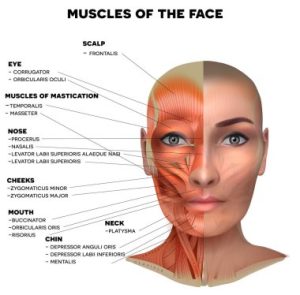
Influence of Overall Body Fitness on Facial Appearance
The influence of overall body fitness on facial appearance is undeniable, as the health and vitality of one’s body are intricately linked to the complexion, contour, and overall appearance of the face. Regular exercise promotes blood circulation, which delivers oxygen and nutrients to the skin, resulting in a radiant complexion and a youthful glow.
Additionally, maintaining a healthy weight through fitness activities helps prevent sagging skin and reduces the appearance of wrinkles, contributing to a more youthful and vibrant facial appearance. Furthermore, exercise aids in reducing stress levels, which can alleviate tension in facial muscles, preventing the formation of wrinkles and promoting a relaxed and serene expression. Ultimately, investing in overall body fitness not only benefits physical health but also enhances the natural beauty and attractiveness of the face.
Skepticism and Limitations
Lack of Scientific Evidence
Scientific proof remains scarce regarding the direct correlation between exercise and nose shape alteration. Despite anecdotal claims, empirical studies validating these assertions are notably lacking. Skepticism arises due to the absence of substantial data supporting such claims, leaving many questioning their validity and effectiveness.
Skepticism from Medical Professionals
Medical experts often express skepticism regarding assertions linking exercise to significant changes in nose shape. Their doubts stem from a lack of empirical evidence and understanding of the physiological mechanisms involved. Professionals emphasize the need for rigorous scientific inquiry to validate any purported connections between exercise routines and alterations in nasal structure.
Exploration of Alternative Factors Influencing Nose Shape Changes Claimed from Exercise
Weight Loss/Gain
While some suggest exercise-induced weight fluctuations may influence nose shape, scientific consensus remains inconclusive. Skepticism persists regarding the extent of such impacts, with researchers calling for comprehensive studies to elucidate this relationship further.
Aging Effects
The natural aging process can subtly alter facial features, including the nose. Skeptics question whether exercise alone can counteract or mitigate these changes, advocating for nuanced investigations into the interplay between physical activity and facial aging.
Perception Bias
Skepticism also arises from potential biases in individual perceptions of nose shape changes attributed to exercise. Cognitive biases may lead individuals to perceive alterations that are not objectively measurable, emphasizing the importance of controlled studies to differentiate between genuine physiological effects and perceptual biases.
Potential Non-Exercise Methods for Altering Nose Shape
Surgical Procedures
Rhinoplasty
Rhinoplasty, commonly known as a “nose job,” is a surgical procedure aimed at reshaping or reconstructing the nose. It is performed for both aesthetic and functional purposes, addressing issues such as a prominent dorsal hump, asymmetry, or breathing difficulties caused by structural abnormalities. The procedure involves careful sculpting of the nasal cartilage and bone to achieve the desired shape and proportion, often tailored to the unique facial features and preferences of the individual.
Beyond its cosmetic benefits, rhinoplasty can significantly enhance self-confidence and quality of life for patients. However, it’s crucial to consult with a qualified plastic surgeon to discuss expectations, potential risks, and the best approach to achieve optimal results. With advancements in surgical techniques and technology, rhinoplasty continues to be a widely sought-after procedure, offering patients the opportunity to achieve a harmonious balance between facial aesthetics and functionality.
Non-Surgical Rhinoplasty
Non-surgical rhinoplasty, also known as a “liquid nose job,” offers a minimally invasive alternative to traditional surgical procedures for reshaping the nose. This innovative technique involves the strategic injection, typically hyaluronic acid-based, to address aesthetic concerns such as nasal asymmetry, dorsal humps, or minor irregularities. Unlike surgical rhinoplasty, which requires anesthesia and significant downtime, non-surgical options offer a quicker recovery period with minimal discomfort.
While the results are temporary, lasting typically up to a year or more, non-surgical rhinoplasty provides a safe and effective solution for individuals seeking subtle enhancements to their nasal profile without the commitment or risks associated with surgery. However, it’s essential for patients to consult with a qualified and experienced medical professional to ensure their suitability for this procedure and achieve desired outcomes safely.
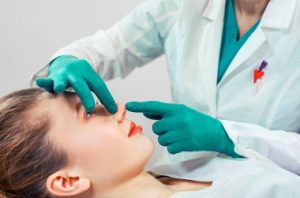
Cosmetic Treatments
Dermal Fillers
Dermal fillers have emerged as a revolutionary tool in the realm of cosmetic procedures, offering a non-surgical solution for reshaping the nose. Through strategic injections, dermal fillers can effectively smooth out bumps, refine contours, and correct asymmetries, granting individuals the opportunity to achieve their desired nasal aesthetic without the need for invasive surgery.
Botox
Botox injections are increasingly utilized as an alternative to surgical rhinoplasty for minor adjustments to nasal appearance. This innovative technique involves strategically injecting Botox into specific muscles around the nose, causing them to relax and allowing for subtle reshaping. By targeting muscles responsible for nasal flaring or drooping, Botox can create a more refined and balanced nasal contour without the need for invasive surgery. The results are temporary but offer patients a less invasive option with minimal downtime compared to traditional rhinoplasty.
Natural Remedies and Therapies
Massage Techniques
Certain massage techniques, such as lymphatic drainage massage or nasal reshaping massage, claim to gradually alter the shape of the nose over time. These methods focus on improving blood circulation and tissue manipulation for subtle changes.
Facial Yoga
Facial yoga exercises target the muscles around the nose and face, aiming to strengthen and tone them for improved facial symmetry. Advocates believe consistent practice can lead to a more defined nose shape and smoother contours.
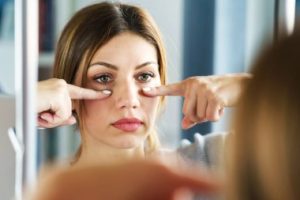
Recommendations
Acknowledgment of Limited Evidence Supporting Exercise’s Impact on Nose Shape
While some believe exercise may affect nose shape, evidence remains limited. The correlation between physical activity and nasal structure is not well-established. However, individuals often inquire about the potential influence of exercise on nose appearance.
Encouragement for Healthy Lifestyle Practices
Embracing a healthy lifestyle is key for overall well-being, though its impact on nose shape is uncertain. Incorporating balanced nutrition, regular exercise, and adequate hydration promotes good health. People frequently seek advice on lifestyle changes for enhancing physical features.
Importance of Consulting Medical Professionals for Desired Changes
Consulting medical professionals is crucial for anyone considering altering their nose shape. Experts can offer personalized advice and guidance based on individual needs. Seeking professional assistance is common among those contemplating cosmetic alterations.
Suggestions for Future Research Areas
Future research should explore the relationship between exercise and nasal structure in greater detail. Investigating the potential influence of specific exercises on nasal morphology could yield valuable insights. Exploring exercise’s impact on nose shape remains a significant area for scientific inquiry.
Frequently Asked Questions (FAQ) about Can You Change Nose Shape With Exercise
Q1. Can you really change the shape of your nose through exercise?
A. While exercises may help in toning certain facial muscles, there’s limited evidence to suggest that they can significantly alter the shape of your nose. Nose shape is primarily determined by bone structure and cartilage, which are not significantly influenced by exercise.
Q2. What types of exercises are typically recommended for nose reshaping?
A. Common exercises purported to affect nose shape include nose wiggles, nose scrunches, and nose massages. These exercises supposedly target the muscles around the nose, but their effectiveness in reshaping the nose is questionable.
Q3. How often should I perform these exercises to see results?
A. There are no standardized guidelines for frequency, but some proponents suggest performing these exercises daily for several minutes. However, it’s essential to approach such exercises with caution and not overdo them, as excessive manipulation of facial muscles could potentially cause unintended side effects.
Q4. Are there any risks associated with attempting to change nose shape through exercise?
A. While exercises themselves may not pose significant risks, attempting to alter nose shape through unconventional methods could lead to disappointment and frustration if results are not achieved. Additionally, excessive or forceful manipulation of facial muscles may cause discomfort or strain.
Q5. Are there alternative methods for altering nose shape without surgery?
A. Non-surgical options for altering nose appearance include makeup contouring, dermal fillers, and nasal reshaping devices. However, these methods also have limitations and should be approached with realistic expectations.
Q6. How can I determine if nose exercise routines are right for me?
A. It’s advisable to consult with a qualified healthcare professional or a dermatologist specializing in facial aesthetics. They can provide personalized advice based on your specific concerns and recommend appropriate options for achieving your desired nose appearance.
Q7. Are there any scientific studies supporting the effectiveness of nose exercises in reshaping the nose?
A. Currently, there is limited scientific evidence supporting the idea that exercises alone can significantly alter nose shape. Most claims are anecdotal, and more research is needed to validate their efficacy.
Q8. Can nose exercises improve breathing or alleviate nasal congestion?
A. Some exercises, such as certain breathing techniques or yoga practices, may help improve nasal airflow and alleviate mild congestion by promoting better nasal passage function. However, their impact on actual changes in nose shape is likely minimal.
Q9. What should I do if I’m dissatisfied with the shape of my nose?
A. If you’re unhappy with the appearance of your nose, it’s best to consult with a qualified plastic surgeon or cosmetic dermatologist who can provide a comprehensive evaluation and discuss potential options, including surgical and non-surgical interventions tailored to your specific needs and goals.
Q10. Are there any natural methods to enhance overall facial symmetry, which may indirectly affect the perception of nose shape?
A. Maintaining a healthy lifestyle, including regular exercise, adequate hydration, and a balanced diet, can promote overall facial symmetry and enhance facial aesthetics. Additionally, good skincare practices and facial massages may help improve skin tone and texture, contributing to a more harmonious facial appearance.
Conclusion
In conclusion, while exercise can contribute to overall facial muscle tone and potentially enhance the appearance of the nose by strengthening surrounding muscles, it is unlikely to significantly alter the shape of the nose itself. The nose’s structure is primarily determined by bone, cartilage, and genetics, factors largely unaffected by exercise.
Surgical interventions remain the most effective means of altering nose shape. However, maintaining a healthy lifestyle, including regular exercise, can promote overall facial harmony and may complement cosmetic procedures for optimal results. Ultimately, embracing individual features and focusing on overall well-being is key to feeling confident and comfortable in one’s own skin.